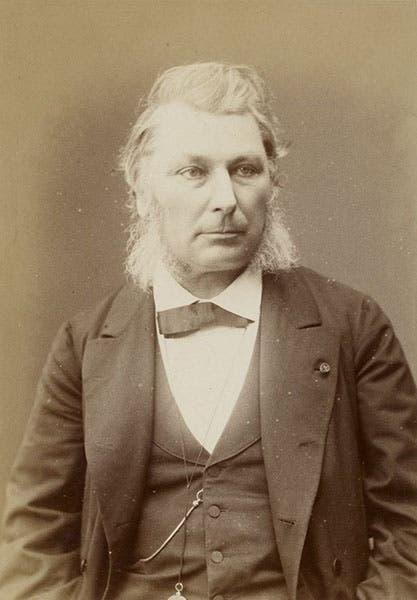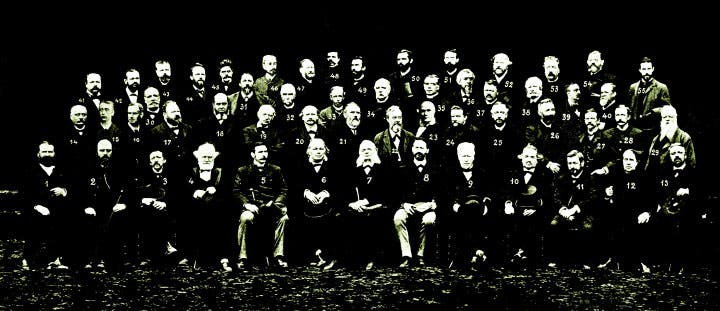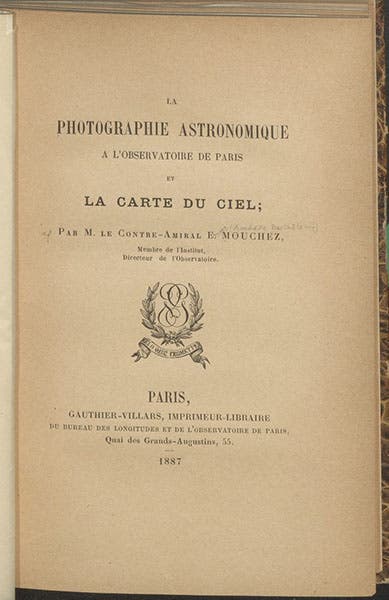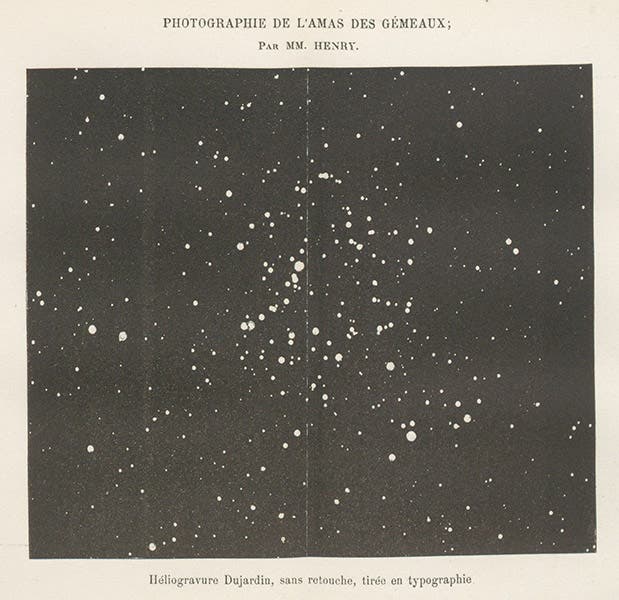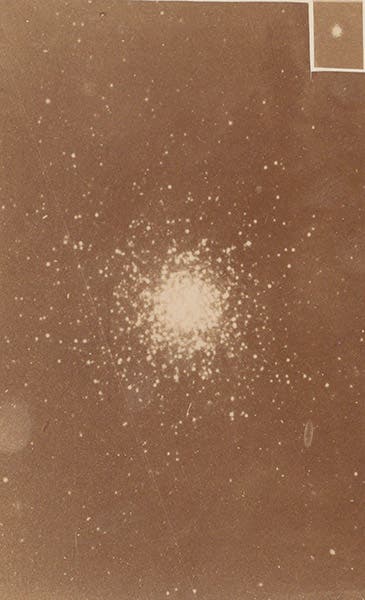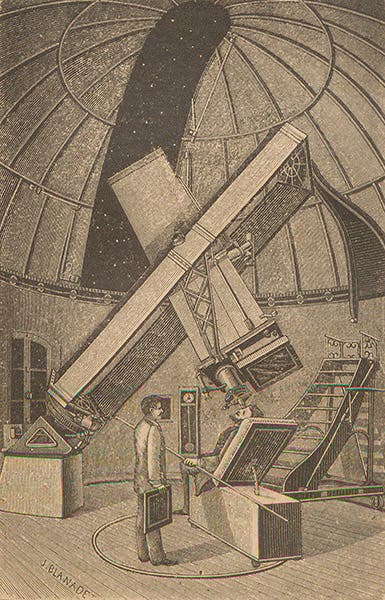Scientist of the Day - Ernest Mouchez
Ernest Amédée Barthélemy Mouchez, a French naval officer and astronomer, was born Aug. 24, 1821. He joined the French Navy at the age of 16 and slowly worked his way up the officer ranks. He conducted several surveying expeditons for the French navy, beginning in the late 1860s, interrupted by the war with Germany in 1870-71, when he was called upon to defend the port of Le Havre. He was appointed to the Bureau of Longitude in 1874 and sent to St. Paul Island in the southern Indian Ocean to observe the transit of Venus of 1874, where he taught himself photography and took hundreds of plates of the transit. The French Academy of Science was impressed, elected him to membership in 1875, and in 1878, he was appointed to the Directorship of the Paris Observatory, and nearly simultaneously, promoted to Admiral.
Mouchez was convinced that the future of positional astronomy lay in photography, and he was pleased to find, on the Observatory staff, Paul and Prosper Henry, two brothers from Nancy who might as well have been twins. They built astrographs (telescopic cameras designed solely for photography), and built them better than anyone else in Europe. Some of the Henry brothers photographs of stellar fields gave Mouchez the idea of mounting a project to record on photographic plates a complete survey of the stars, so that their exact positions (an Astrographic Catalogue) could be derived directly from the plates. David Gill of England had the same idea, and since this would have to be an international effort, they decided to sponsor an International Astrographic Congress, bringing together the heads of some 16 different observatories. The first Congress took place in 1887, and the Carte du Ciel project – the "map of the skies" – was born. A group photograph was taken of the 1887 attendees – Mouchez is just left of center in the front row. Paul and Prosper Henry, being mere technical staff, were relegated to the back row at the very left. If you spot two gentlemen who look exactly alike, those are the Henry brothers.
The Carte du Ciel was a grand idea, but as it turned out, unrealizable. The technology changed too fast, so that the first plates taken were soon obsolete. The Paris Observatory completed photographing its assigned part of the sky, but some observatories never even got started, before the project was eventually abandoned.
In the same year that the first Congress convened, 1887, Mouchez published a handsome folio book, called La Photographie astronomique a l'Observatoire de Paris et La Carte du Ciel. We have this book in our collections. I do not know whether the book appeared before or after the Congress met; it appears as if its purpose was to convince others that the Paris Observatory was already very good at astronomical photography and was the right place to head up the Carte du Ciel. There are a dozen full-page photographs taken by the Henry Brothers, printed in photogravure. Some show stars, like a plate of part of Gemini (fourth image), and another of the great globular cluster in Hercules (fifth image), but others captured the moon and the planets, which have nothing to do with the Carte du Ciel, and would seem to be just showing off, putting the work of the Henry Brothers on display for others to admire (sixth image).
One of the plates depicts the astrographic camera built by the Henry Brothers, and Paul and Prosper just happen to be in the photograph (seventh image). No one can ever tell them apart.
Admiral Mouchez, as he was always called, died in 1892, while the Carte du Ciel was still a thriving enterprise, and so he was spared the pain of seeing his grand project fall apart.
William B. Ashworth, Jr., Consultant for the History of Science, Linda Hall Library and Associate Professor emeritus, Department of History, University of Missouri-Kansas City. Comments or corrections are welcome; please direct to ashworthw@umkc.edu.


